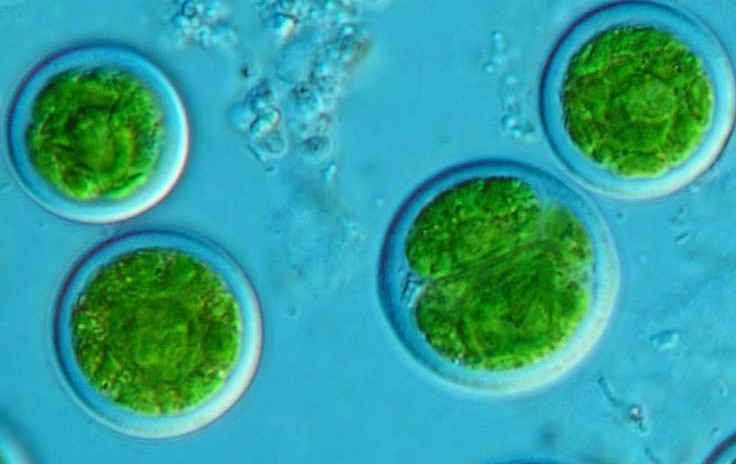
(Photo: Wikimedia Commons/Miguel Varona) Single-Cell Algae Transformed Into Functional Perovskite Materials With Unique Nano-Architectures
Single-cell algae can be used for various applications once turned into perovskite materials. A new study has shown that this is possible through nanotechnology.
Single-Cell Algae Into Perovskite Materials
A team of scientists at Technische Universität Dresden created perovskites with unique nano-architectures and crystal properties from single-cell algae. They were able to do so by taking advantage of years of evolution of the unicellular organisms, Science Daily reported.
According to Dr. Igor Zlotnikov, research group leader at the B CUBE -- Center for Molecular Bioengineering who led the study, single-cell organisms over hundreds of millions of years responded to various environmental factors like temperature, pH, and mechanical stress.
He added that the minerals from living organisms often exhibit structural and crystallographic characteristics beyond the production capacities available from current synthetic methods.
The team focused on L.granifera, a type of algae that uses calcite to form shells. Its spherical shells have unique crystal architecture aligned radially and spread out from the center outwards.
Dr. Zlotnivok said the existing methods to manufacture perovskites could not produce the same materials synthetically. However, they can transform their natural structures into functional materials while keeping their original architecture.
Chemical Tuning to Transform Algae's Natural Mineral Shells Into Functional Perovskites
The researchers used substitute chemical elements in calcite to convert the natural shells of algae into functional perovskites. They also adapted a method designed by their collaborators at AMOLF Institute in Amsterdam.
During the transformation process, the team produced different types of crystal architectures by changing the chemical build-up of the material, which enabled them to fine-tune their electro-optical properties.
The scientists produced functional perovskites by converting the calcite shells to lead halides using iodine, bromide, or chloride. The functional perovskites were optimized to emit red, green, or blue light.
Zlotnikov said the research was the first proof that the minerals produced by unicellular organisms could be transformed technologically into relevant functional materials. He added that instead of competing with nature, they could use algae and various calcite-forming single-celled organisms to create functional materials with unique shapes and crystallographic properties.
The project was part of the DinoLight imitative supported by the Free State of Saxony that aims to develop innovative, environmentally friendly materials and technologies from naturally occurring three-dimensional structures.
What Is a Perovskite?
According to Clean Energy Institute, perovskite is a material with the same crystal structure as the mineral calcium titanium oxide. It has a chemical formula ABX3, where 'A' and 'B' represent cations, and X is an anion that bonds to both.
Many elements could form perovskite structures when combined. Scientists usually design perovskite crystals with physical, optical, and electrical characteristics.
Due to perovskite's unique physical properties, it has a lot of practical applications, including in sensors and catalyst electrodes, ultrasound machines, certain fuel cells, solar cells, lasers, memory devices, and spintronics applications, Perovskite-info reported.
RELATED ARTICLE: Efficacy of Intranasal Flu Vaccine with Nanoparticles Can Help in the Fight Against Influenza Virus
Check out more news and information on Nanotechnology in Science Times.

